#kiso no yoshinaka
Explore tagged Tumblr posts
Text
Ryu Number: Aristides
Aristides—often called "Aristides the Just"—was an early 5th century politician and general of the city-state of Athens. He first rose to notability leading troops to ward off the Achaemenid Empire at the 490 BCE Battle of Marathon (the Achaemenids being the "Persian" part of "Greco-Persian Wars").
Politically, he opposed another Athenian politican and general, Themistocles, a rivalry which eventually resulted in Aristides' ostracism from Athens—"ostracism" being a democratic procedure where Athenian citizens could vote for someone to be exiled from Athens for ten years.
Plutarch, the 1st century Greek philosopher and historian, tells an anecdote that took place during this event. As voters were inscribing their ostraca (the broken pieces of pottery on which voters wrote the names of those they would ostracize—in the singular, "ostracon"), Aristides was approached by one illiterate citizen who, not recognizing Aristides, asked him to write Aristides' name on it for him. Aristides asked the man what wrong it was that Aristides had done him.
"None at all," came the response, "neither know I the man; but I am tired of hearing him everywhere called 'The Just.'"
Aristides said nothing else, but wrote his name on the ostracon and returned it.

Aristides has a Ryu Number of at most 2.
Aristides gets on The Chart thanks to the new "Chronicles: Battle for Greece" DLC for Age of Empires II: Definitive Edition. Other additions include his rival Themistocles, the Achaemenid-allied queen Artemisia I of Caria, and Lysander, who destroyed Kalos the Athenian Empire.
Incidentally, the Ostracon Incident (which I'm pretty sure is the title of a Robert Ludlum novel) shows up in the game, though the narration doesn't call attention to it.

Yeah, that means the illiterate man who needed help with his ostracon also has a Ryu Number of at most 2. Consider that a little bonus Ryu Number for y'all.
#ryu number#ryu#minamoto no yoshinaka#kiso no yoshinaka#age of empires ii: definitive edition#aristides
68 notes
·
View notes
Text


A couple pages of practice drawings of Damian Priest, plus Kagekiyo and Yoshinaka.
#Vox Operandi#genpei toumaden#taira no kagekiyo#kiso no yoshinaka#wwe#damian priest#ダミアン・プリースト#プロレス#traditional art#short sketch#short sketches#源平討魔伝#平景清#木曽義仲#ナムコ#ナムカプ#ナムコクロスカプコン#アート#namco#bandai namco#namco x capcom#fanart#video game#pc engine#turbografx 16#the dj speaks
2 notes
·
View notes
Text
Fate Samurai Remnant Digital Artbook
part 4






















#fate samurai remnant#Fate Samurai Remnant Digital Artbook#arjuna#gilgamesh#Tamamo Aria#Cú Chulainn#lancer#Kiso Yoshinaka#fate#fate official art
111 notes
·
View notes
Text
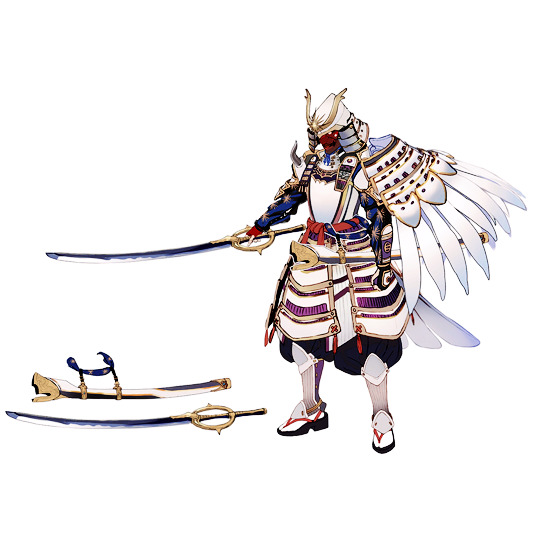
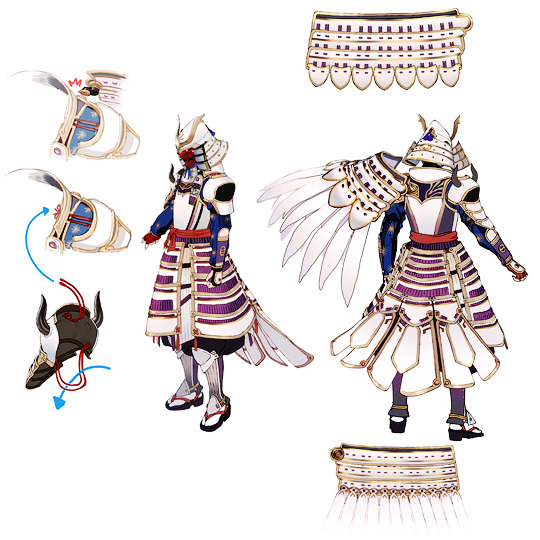
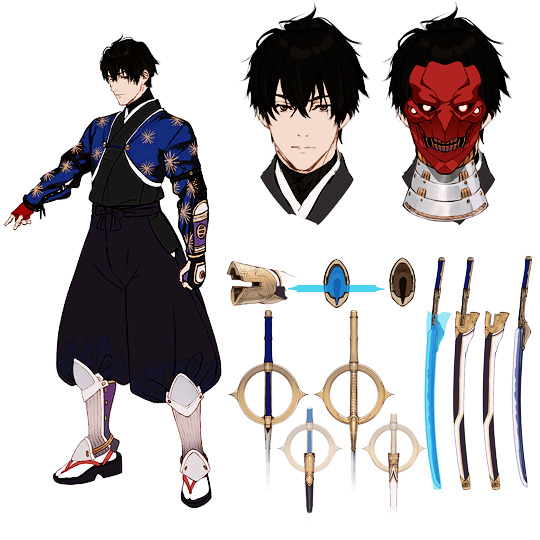
FATE/SAMURAI REMNANT REFERENCE SHEETS: ROGUE SABER
245 notes
·
View notes
Text
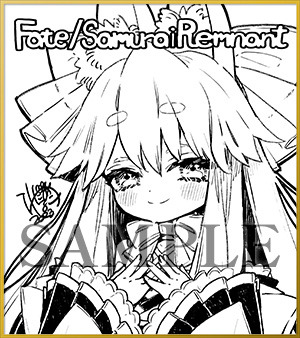
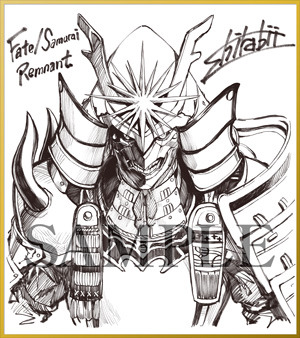
Autographed art of Tamario Aria and probably-Yoshinaka by their original designers, Wada and Shirabii. Will be given away for a FSR contest being held in Japan.
209 notes
·
View notes
Text

also.... a shitpost for the @nasuversekinkmeme prompt:
tomoe gozen gets top surgery
[ original prompt ]
21 notes
·
View notes
Text
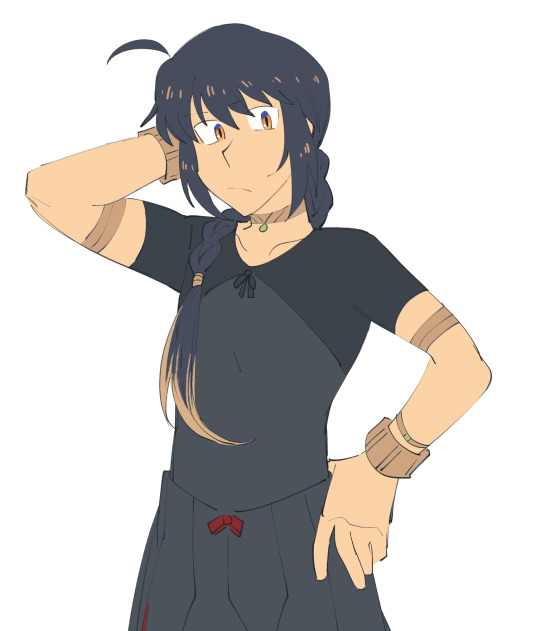
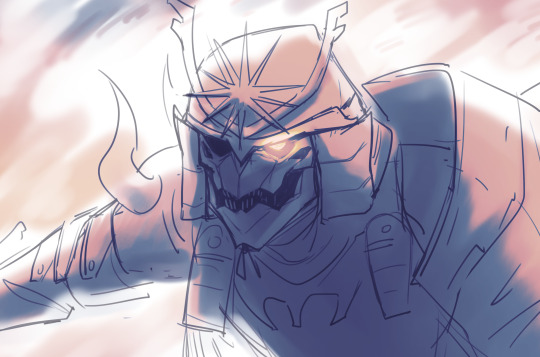


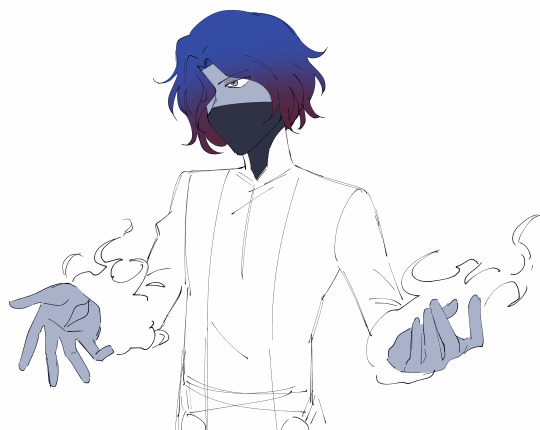
collection of bad doodles that made me realize i dont actually want to draw anyone in this game. its too difficult. only iori and saber for the rest of my days. goodbye
#fate#fate samurai remnant#zheng chenggong#dorothea coyett#kiso yoshinaka#ghost's art#fanart#yamato takeru#zhou yu#koga saburo#hieda no are
107 notes
·
View notes
Photo
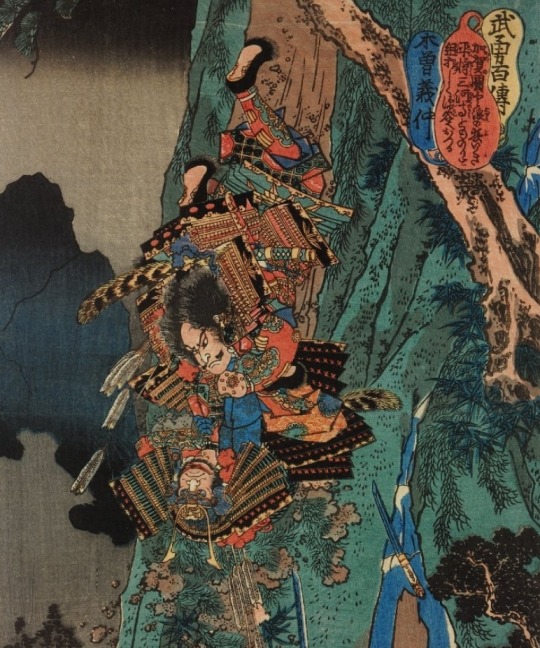
#ukiyo-e#Utagawa Kuniyoshi#歌川 国芳#Kiso Yoshinaka#japan#japanese#asia#木曽義仲#Buyu hyakuden#武勇百傳#A Hundred Stories of Military Valour#British Museum#Woodblock print#Edo Period
109 notes
·
View notes
Text


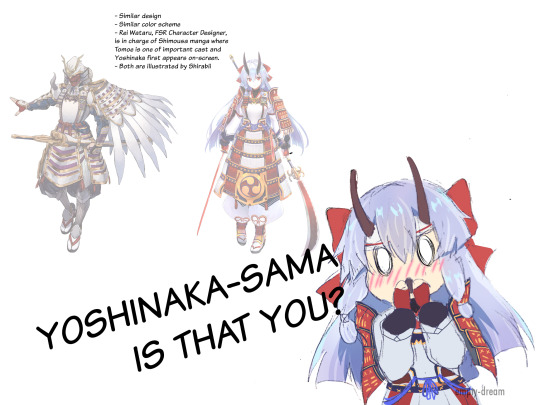
Fate/Samurai Remnant: *is announced* Me: Ok. Fate/Samurai Remnant: *has melancholic maybe-not-really Jalter, Ruler Gilgamesh, and possibly Yoshinaka* Me: HELL YEAAAAHHHH
Jeanne Alter (???)
Tbh I didnt care much about her in FSR at first cuz isn't she only capable of existing in FGO-verse and getting out of it is blatant cash cow exploitation breaking the rule which I'm not interested in the detail.
Until I realized that this Jalter looks exclusively somber while FGO Jalter always has this smug look. And then there is the theory that either this is just Jeanne but corrupted (which breaks the "Jeanne's so holy any attempt to corrupt her will fail" rule so instead it'll create a new version of Jalter instead of FGO Jalter) or this is a different person altogether.
Anw, long live that somber look.
Boss
*Gilgamesh is the shopkeeper in FSR* WHAT
*He is also a Ruler* WHAAATTTTT
Well he considers everything to be his anyway so yeaah he basically never cares about the Grail or who should win it, which technically does qualify him as the ever impartial Ruler.... (I guess the Catholic saint requirement for that class is completely obsolete by now.)
Though ngl I did imagine Ruler Gil at least once after the Caster incarnation was introduced.
Rogue Saber
HOLY SHIT YOSHINAKA-SAMA IS THAT YOU???????
#fate samurai remnant#jeanne alter#gilgamesh#kiso yoshinaka#tomoe gozen#type moon#mypic#myart#ill edit the tag once the real identities are confirmed#thought i wouldnt be immediately invested in a new Fate#boy was i wrong#i gotta train with color values more
42 notes
·
View notes
Text
The former Defense cut across the valley, crumbling, crumbled, its shadow greater than its height.
“Tell me,” Lord Kiso said, “which of these stones is most important?”
“The largest,” the girl answered too quickly, “around whom others build.”
But the great leader shook his head. So, “the keystone,” the girl pointed to a stone, the size of her calloused fist, “without whom those above would fall apart.”
The great leader said, “No. It is these,” he swept his hand along the top, scattering easily the countless pebbles bouncing, cracking against the gravel ground below, returning to their brethren. “These hold us down under their weight, these fill in each crack and cranny, these serve as mortar when expertly placed, yet unlike foolish Eutopian marble, they jostle and flex and hold under the mightiest earthquake. These, Kai, are who we must prioritize, without whom you and I and all true heroes would be boulders toppling down the crags.”
#writing#writeblr#writers on tumblr#fantasy#Ennead#Kai#Kiso#Yoshinaka Kiso#writing every day#WED#WED 24#worldbuilding#Minamoto Yoshinaka#Minamoto#Dewdrops#heike monogatari#the heike story
2 notes
·
View notes
Text

Tomoe Gozen, Wife of Kiso Yoshinaka, Defeating Uchida Saburō
59 notes
·
View notes
Text
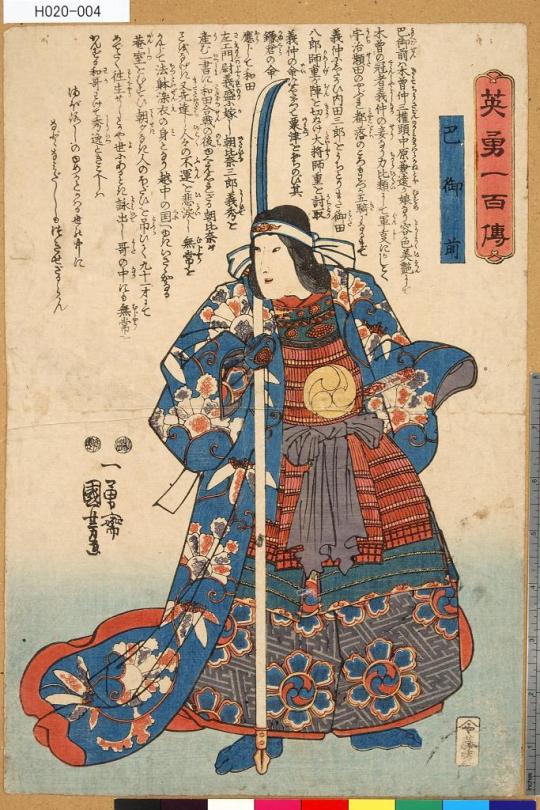
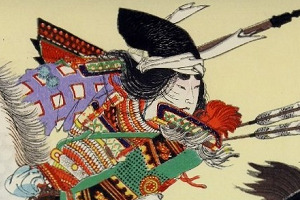
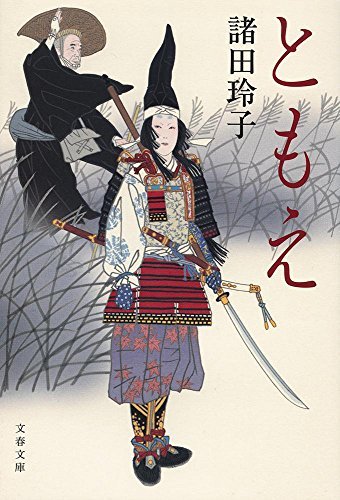

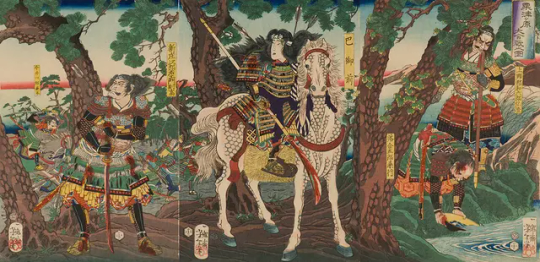

Sean bienvenidos, japonistasarqueológicos a una nueva entrega en esta ocasión hablaremos de Tomoe Gozen una vez dicho esto pónganse cómodos que empezamos. - Tomoe Gozen en hiragana (ともえごぜん) pertenece a Onna-bugeisha (女武芸者) mujeres luchadoras en japonés se conoce más como Ba Yuqian, al hablar de samurais se nos viene imágenes de hombres, las mujeres también tuvieron un gran papel y Tomoe Gozen fue una mujer que participó en el conflicto Genpei 1180-1192, su existencia está un tanto discutida. - Kiso Yoshinaka es muy hábil en las artes marciales y es bueno en el uso de arcos y flechas, os pondré una foto de la Estatua de Kiso Yoshinaka y Bagomae en la prefectura de Nagano. Fue una gran estratega, ya que cuenta la leyenda que en la Batalla del paso de Kuligara uso toros de fuego. - El Cantar de Heike: Son los poemas clásicos más importantes de la historia y la literatura japonesa, en el cual hablan de un sinfín de personajes y leyendas de la época. Fue escrito a principios del siglo XIII. - Espero que os haya gustado, os deseo una feliz semana y nos vemos en próximas publicaciones. 考古学ジャポニストの皆さん、新しい連載へようこそ。今回は巴御前についてお話します。そうは言っても、気を楽にしてから始めましょう。 - ひらがなで「ともえごぜん」は女武芸者に属し、日本語では巴玉銭として知られる女性戦士です。武士といえば男性のイメージが思い浮かびますが、女性も大きな役割を果たしました。 1180年から1192年にかけて源平合戦に参加した女性ですが、その存在については若干の議論があります。 - 木曽義仲は武芸に優れ、弓矢の扱いにも長けており、長野県にある木曽義仲像と馬籠前の写真を載せておきます。 クリガラ峠の戦いでは火の雄牛を使用したという伝説があるため、彼女は優れた戦略家でした。 - 平家の歌: 平家の歌は、日本の歴史と文学において最も重要な古典詩であり、その中で当時の無数の登場人物や伝説について語られています。 13世紀初頭に書かれました。 - 気に入っていただけたなら幸いです。楽しい一週間をお過ごしください。また今後の出版物でお会いしましょう。 Welcome, Archaeological Japonists to a new installment, this time we will talk about Tomoe Gozen, having said that, make yourself comfortable and let's start. - Tomoe Gozen in hiragana (ともえごぜん) belongs to Onna-bugeisha (女武芸者) female fighters in Japanese is better known as Ba Yuqian, when talking about samurai images of men come to mind, women also had a great role and Tomoe Gozen was a woman who participated in the Genpei conflict 1180-1192, her existence is somewhat disputed. - Kiso Yoshinaka is very skilled in martial arts and is good at using bows and arrows, I will put you a photo of Kiso Yoshinaka Statue and Bagomae in Nagano Prefecture. She was a great strategist, since she tells the legend that in the Battle of Kuligara Pass she used bulls of fire. - The Song of Heike: They are the most important classical poems in Japanese history and literature, in which they speak of an endless number of characters and legends of the time. It was written at the beginning of the 13th century. - I hope you liked it, I wish you a happy week and see you in future publications.
#歴史#日本#巴御前#恩納武芸社#馬遊前#武士#神話#平安時代#湊藩#平氏#湊頼朝#history#Japan#TomoeGozen#Onnabugeisha#BaYuqian#samuraise#mythology#HeianPeriod#MinamotoClan#TairaClan#MinamotonoYoritomo#考古学#unesco#ユネスコ#geography#archaeology#culture#文化
46 notes
·
View notes
Text
I've come to the conclusion that, in my humble opinion, Higashide is the writer in TYPE-MOON who makes the best ships involving Heroic Spirits.
Which might sound really weird. After all, the central couple in Fate/Apocrypha is Sieg/Jeanne d'Arc, and it's a pretty divisive one. No offense to those who like it, but it's always a dynamic I thought made no real sense narratively and didn't have much chemistry. Sieg on his journey of self-affirmation and personhood didn't need a romance (except maybe with Astolfo, with whom the dynamic is much more fun). Jeanne, the historical figure who rejected a marriage proposal, wore male clothing, and whose famous nickname refers to her celibacy, getting into a romance just never vibed with me (especially when it felt like the parallels/relationship between her and Shirou Kotomine were far more relevant). Add to that the ending copying Last Episode without what made LE have a strong impact, and it makes the whole even less appealing.
But despite that, Apo is also the work where there is the surprising ship of Shirou Amakusa and Queen Semiramis of all people: the semi-legendary Assyrian queen credited with making one of the Seven Wonders of the ancient world falling in love with the young charismatic Japanese Christian who rebelled against the shogunate and failed. It's a very strange crossover ship between two people who never could have met if not for being brought back and it somehow works in being endearing.
(Achilles and Atalanta kinda count I guess, but it's a one-sided ship with little reasoning, that I care so little about, and is eclipsed by the more compelling foils each get, Chiron for Achilles, Jeanne for a Jackie the Ripper-driven mad Atalante.)
Higaside having grown and improved as a writer by the time of FGO, what followed this growth was him not doing a repeat of Sieg/Jeanne, but writing better ships mostly involving Servants. Asterios the Minotaur and Euryale the Gorgon; last Byzantine emperor Constantine IX and fictional Popess Johanna; heck, you can even see the relationship between Mordred and Dr. Jekyll this way (it also works as simple close friendship). Being characters from usually completely different mythologies and historical cultures, there is care done to make it clear why they fall for each other and as a result these couples are very different from one another instead of being the same formula everytime. In a game where a lot of (female) Servants are made to fall for the last Master of Chaldea for sometimes very little reason, these are a breath of fresh air.
For all my problems with her, Sakurai does something similar, though her ships are usually people who canonically were together in their legends: Sigurd/Brynhild, Aslaug/Ragnar Lodbrok, Julius Caesar/Cleopatra, Ozymandias/Nefertari, Tomoe Gozen/Kiso Yoshinaka, etc. They can be one note and there is a repeated thematic tendency of hers of writing "inhuman woman discovering humanity by falling in love", but they tend to be very cute and I easily understand that these people are in love even beyond death, so I root for them to reunite. Higashide also has "canonical" pairings, but the results are more muddled here: Siegfried and Kriemhild are adorable as a divorced couple where there are clearly still feelings, no matter what the tsundere wife says. But Rama and Sita are just...there. I understand the point of their separation, but it's not very engaging and Rama essentially disappeared after the American Singularity, while Sita was yeeted to Arcade. A mark against Higashide, but not as bad as Sieg/Jeanne and overshadowed by the numbers of better ships he wrote in FGO.
And there's Orion and Artemis, where I'm split. Super Orion and LB Artemis was really good and poignant. Orion the teddy bear and ditzy Artemis are a realy bad joke that overstayed its welcome.
FGO prioritizes Master/Servant relationships, both because the last Master of Chaldea is a blank slate for players to self insert into, and also because human×Servant is the type of ship Nasu specializes in (Shirou/Saber, Rin/Saber, Kuzuki/Caster, Caren/Angra Mainyu, and to a lesser extent Bazett/Cu, Yukika/False Assassin, and Ayako/Medusa in FSN; Fate/Extra as a whole; Ritsuka/Castoria in FGO). But even there Higashide made better choices than when he penned Sieg/Jeanne. Charlotte Corday is a surprisingly well-done choice for her archetype, it seems like it's going to be another Kiyohime but no, he actually makes her a good character you get attached to.
And then there is Kadoc and Anastasia. Words cannot describe how much I love them, how their personalities clash and complement each other in the best way, how aesthetically good they look put next to each other, etc. And it's not even just that we got a MasterxServant relationship outside Ritsuka, though that helped.
Basically, Higashide has become my go-to source for good ships, especially intra-Servants ones where Ritsuka is not involved and characters are allowed to not orbit around their Master. Sakurai also provides in that last aspect, but Higashide is doing that and also giving that crossover flavor you see in things like that one Cartoon Network ad with Johnny Bravo and Velma, and that works really well for me.
#yuuichirou higashide#fate series#fate grand order#fate/grand order#fate/go#fgo#shipping#ramblings#not tagging all of them
55 notes
·
View notes
Text

Kiso Yoshinaka and the Flight of the Child Emperor
Tomoe Gozen, by Kitao Masayoshi, Edo Period, Source: Ukiyo-e.org
The Rise of the Minamoto: Japan’s First Shogunate
The samurai, through most of Japan’s history, were the ruling warrior class. But that wasn’t always so. Discover how Japan transitioned under the Minamoto.
Yoshitsune’s Campaign

The Battle of Ichi-no-Tani, on folding screen, late 1600s, Source: Wikimedia Commons
Dan-no-Ura

Yoshitsune Leaps Over Eight Boats, by Utagawa Yoshitoshi, 19th century, Source: The Art of Japan
The Kamakura Shogunate

Hunting at the Foot of Mount Fuji, by Utagawa Kunisada, 1820, Source: Japanese Prints
#the rise of the minamoto#japan#history#minamoto#shogunate#samarai#kitao masayoshi#artist#art#utagawa yoshitoshi#utagawa kunisada
2 notes
·
View notes
Text

226 notes
·
View notes
Text
"SAMURAI WOMEN"
WERE THERE SAMURAI WOMEN?
In early medieval Japan there was an elite of women trained in martial arts and the use of weapons whose mission was to be prepared to defend their honor and their home in times of war, when men had died or marched to the front. These were the onna bugeisha (literally translated as “warrior women”), the samurai women of ancient Japan.
Despite the submission to father and husband that Japanese society imposed on women, converted into cultured wives and devoted mothers by the mentality of the Heian period, there is evidence of women belonging to the noble and warrior classes who were prepared for enter combat if necessary.
These women were trained in the use of the naginata, a spear with a long shaft and curved blade that allowed them to keep their distance from the enemy, the kaiken (a straight-bladed dagger) and the Tanto (a short katana). Although they were prepared for defensive situations in which they could repel enemies that came to their home when there were no men to fight, there were cases in which women participated in offensive actions.
The best-known direct antecedent is that of Empress Jingu, a semi-mythical character who took the place of her husband and assumed the government of the islands and command of the army in an attempt to conquer Korea. Although historians question the veracity of the facts, Jinpu is represented as a fierce warrior who imposed her will on a society that rejected her and ended up overcoming the obstacles that would have prevented her from ruling.
Tomoe Gozen's deadly katana
But without a doubt, the best-known samurai woman in Japanese history is Tomoe Gozen, who is mentioned in the Tales of the Heike and whose beauty and bravery in combat stand out. Tomoe went a step further and she surpassed the standards of the onna bugeisha both because of her skills and the situations in which she was involved. In addition to weapons such as the naginata or the Tanto, Tomoe Gozen was an expert in the use of the katana, archery and horseback riding.
It is one of the few cases in which a woman actively participated in an offensive war action, specifically in the battle of Awazu (1184) where she led a small number of troops in the charge against Minamoto Yoritomo's troops. It is said that Tomoe Gozen fought alongside her husband (or lover) Kiso Yoshinaka and her end is not clear since, depending on the source, some claim that she died or committed suicide in combat and others that she was one of the few survivors of that battle. .
Other famous samurai women
Although history forgot them (or tried to do so), cases of female warriors in Japan are much more common than one might think and extend in time until the very end of the samurai. A striking case is that of Hojo Masako, a contemporary of Tomoe Gozen but with a better documented and less mythologized life. This woman was the wife of a shogun and as such she decided to accompany him in his skirmish as his lieutenant. It is said that when her husband died she abandoned the warrior life and became a nun, but later she took up arms and continued working as an onna bugeisha.
The most recent case, and perhaps therefore one of the best known, is that of Nakano Takeko. She lived between 1847 and 1868, she was the daughter of an officer who educated her in both literature and combat. During the Boshin War, which pitted the worn-out Tokugawa shogunate against a group of nobles seeking to return power to the emperor, Nakano Takeko turned her loyalty to the shogun and led a small army made up entirely of women. She died during the Battle of Aizu when she, seriously injured, decided to perform seppuku (suicide ritual) to avoid being taken alive.

3 notes
·
View notes